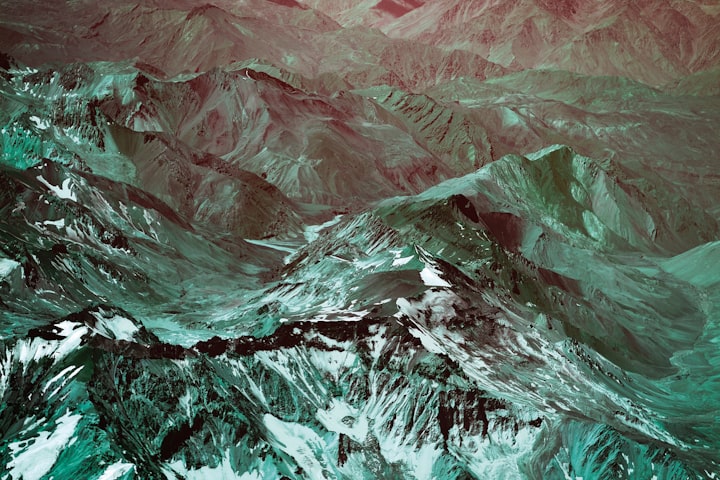
Garzone and Andrew Leier, associate professor of Earth and Ocean Sciences at the University of South Carolina, used new temperature recording techniques in two different studies of different Andean regions to determine whether rapid eruptions were normal, without mountain formation in the region. Garzone worked in the southern Altiplano and collected meteorological records that preserved ancient soils in low-lying areas near the sea, where temperatures remained warm throughout the region's history, and at higher altitudes, where they cooled as the range of mountains rose. He and Lyre have strong isotope evidence for many of the effects of this increase in Bolivia's central Andes, which focus on the binding behavior of carbon and oxygen isotopes in calcite minerals from rainwater, and their effects are similar.
This is a good example of how the orographic effects of prominent mountains facing north and south can change a simple climate dependence on the width. In the tropical regions of western South America, where the highest elevation is 4,500 feet [4,500 m] and a width of about a mile [1 km], the Andes plateau separates the arid climate from the west and the rainy climate from the east. As a result, the climate on the western and eastern sides of the Andean Cordillera has areas with significant rainfall patterns.
The Andes ran along the western tip of South America from Venezuela to Chile in its southern part and then into Ecuador, Peru, and Bolivia. At its height, the mountains are divided into several mountains, while the two largest mountains, the Cordillera Oriental and the Cordilleras Occidental, are separated by central bullet points.
The Andes are located on a continuous plateau on the west coast of South America. On this coast, they pass through Peru, Bolivia, and Perubolivia and range from 7,000 km to 200 km and 700 km with a length of between 4,000 m. More than 9,000 miles [9000 km] away, it is the tallest mountain in the world. No other place on the face of the earth is as close to the center of the Earth as the Chimborazo Andes summit in the Andes in Ecuador; it is an inactive volcano.
The Andes stretch to more than seven countries (Venezuela, Colombia, Ecuador, Peru, Bolivia, Chile, and Argentina) and lie between 10 and 57 degrees south and 70 degrees and 80 degrees west. The only mountains higher than the mountains are the Himalayas and their surrounding areas, including the Hindu Kush. The mountains are divided into three groups: the watery Andes, the arid Andes, and the tropical Andes (depending on the weather).
The Andes is Asia's highest mountain range, with its highest peak, Aconcagua, rising 20,000 feet [6,960 m] above sea level. They are part of the American Cordillera, a series of mountain ranges (Cordillera) that consist of a continuous series of mountains that form the western core of North America, Central America, South America, and Antarctica. The mountains are 4,000 km long and 300 km long (Bolivia curve), and are 640 km wide, with an average height of 4,000 m.
The highest mountain in Asia is Aconcagua, Argentina, rising 6,000 feet [6,961 m] above sea level. The summit of Mount Chimborazo in the Ecuadorian Andes is the epicenter of the equatorial bulge. The world's highest volcanoes are in the Andes, including Ojos del Salado on the Chile-Argentina border at 6,893 m.
The highest mountains in the south and west of the hemispheres are the rugged Andes of Argentina and Chile. They are part of a large mountain range that stretches along the western edge of South America. The Andes run along the southern tip of South America and are the tallest mountain in the world. It consists of 15,450 named mountains, of which Cerro Aconcagua, 6,961 m, is the highest and most prominent.
The highest peaks in Asia include the majestic mountains, such as the Himalayas, the Karakoram, and the Andes, home to some of the world's highest peaks. The vast expanse of mountains stretches along the western edge of South America and covers an area of 4,000 miles [7,000 km] from the southern tip of the country (Argentina and Chile) in the southern seas, from Venezuela and Colombia to the Caribbean coast.
Peru is home to the Andes, one of the oldest mountains ever built on the plateau of Nazca and Antarctic plateaus. Along with the Himalayas of Asia, it is the second-highest mountain in the world and rises to over 12,000 feet [4,000 m].
The mountains of Peru attract visitors from all over the world and offer an unparalleled combination of natural beauty, cultural heritage, opportunities, physical challenges, and performance. There is a rich cultural heritage that falls throughout the regions of Peru, and in Peru, this is evident in the beautiful archeology that contains La Sierra. The mountains of La Sierra and Peru are ubiquitous and complex, and numerous small, named mountains form the Andes of Peru.
One of the few Spanish Inca cities not to be discovered at the time of their conquest was Machu Picchu, hidden in the mountains near the Andes where they flew the Amazon. It is one of the most famous places in the Inca Empire.
Many of the stones that make up the modern Cordillera originate when corpses from the Amazon Craton, an ancient piece of the Brazilian continent, were flooded and placed on its western side 450 to 250 million years ago. The weight of these deposits forced the reduction and cracking of the crust, resulting in stress and heat that converted deposits into resistant stones such as sandstone, siltstone, and limestone, and then converted to quartzite, slate, and marble.
About the Creator
Sita Dahal
Hello, I am Sita Dahal, I am an artist and love roaming around the globe.





Comments
There are no comments for this story
Be the first to respond and start the conversation.